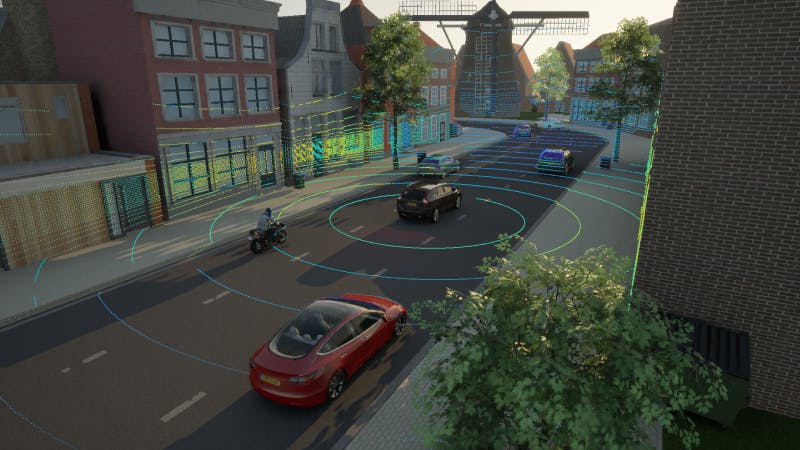High-fidelity sensor simulation is required to develop and test autonomous vehicles thoroughly. Simcenter Prescan is a leading simulation platform for testing and developing autonomous vehicle functionality. The physics-based sensor simulations of Simcenter Prescan provide the highest level of detail and are state-of-the-art in the market. However, are the quality and correctness of those high-fidelity sensor models ensured?
This webinar will discuss our approach to verification and validation of automotive sensor simulation, including the following topics:
- Verification during development of the simulation
- ISO26262 certification of the software
- Verification and validation (V&V) of the simulation through dedicated projects
Model a digital twin of the environment of the sensor in simulation
Three key components are essential to provide an excellent physics-based simulation. Physical devices provide sensor-specific highway configuration, physical properties, noise, and patterns, while the simulation engine handles effects such as bounces (ray tracing), energy returns, and weather. The world component consists of a digital twin containing the geometry of 3D models, materials (measured, validated), and environment. By using a digital twin of the vehicle, engineers can design and test vehicle control algorithms to identify system performance under challenging conditions, find system boundaries and solve critical issues early.
Reproduce physics-based sensor effects in simulation with Simcenter Prescan
Simcenter Prescan is the core simulation engine for environments, scenarios, sensors, AI, and controllers, and its representations contain the reflective properties for radar, camera, lidar, and ultrasonic sensors. Simcenter Prescan allows the reproduction of camera effects in simulation, including different fidelity outputs, reflection, weather and light effects, physical device, micro-doppler of wheels, ghost target detection, and doppler ambiguity. It also allows for Lidar effects reproduced in simulation, such as motion distortion, multi bounce, and physics-based material reflections. These sensor models can be scaled from basic ground truth information to full-wave propagation modeling for detailed sensor evaluations.
Verification and validation of sensor simulation during development
Automakers will have to prove the thoroughness of their development processes and robustness of the vehicle’s automated driving systems for occupant safety. Because of this, automated driving systems will have to react safely to all possible traffic scenarios under any likely weather and road conditions. However, the technology enabling this is complex and requires a validation and verification process that allows performance testing in a large number of circumstances. Fortunately, Simcenter Prescan can reproduce crucial real-world effects that affect system performance, allowing for accurate simulation validated against real-world measurements.
Watch the on-demand webinar to learn more about our physics-based sensor simulation solutions for autonomous vehicle development.
Poznaj naszego eksperta

Bart Heijke
Product Manager Software and Services
